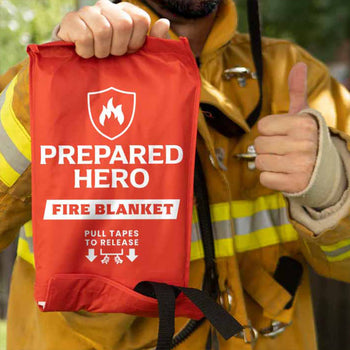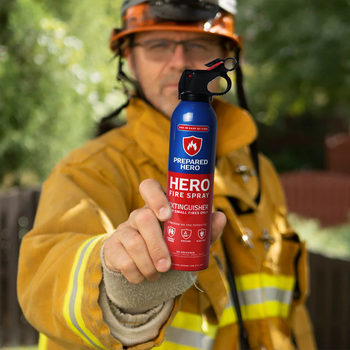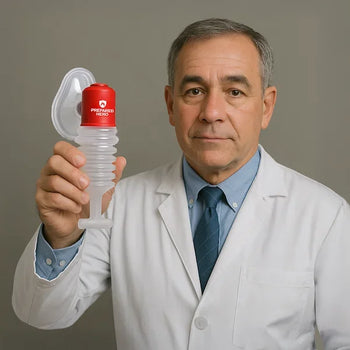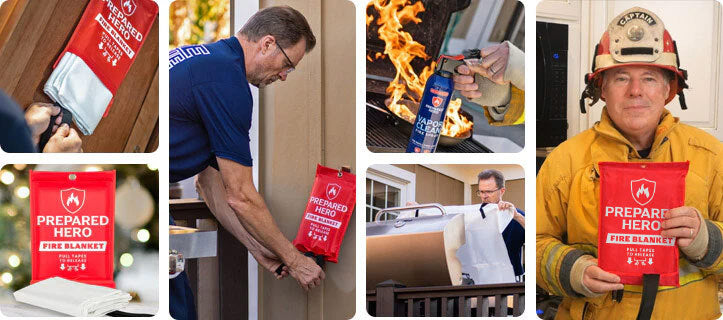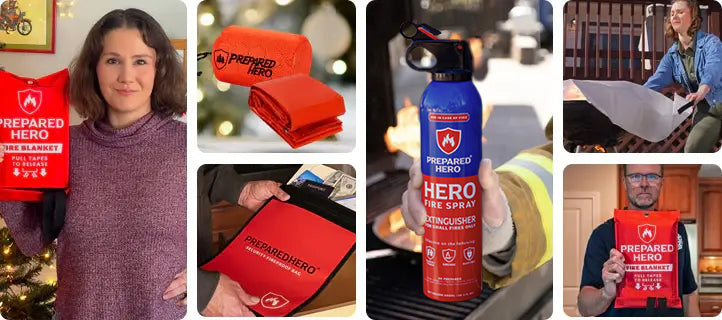Where you put your smoke detectors matters just as much as installing them. Proper placement makes sure they can detect...
Different emergencies call for different vehicles, and fire departments have different fire trucks for specific jobs. Some carry water, others handle rescues, and a few are made for support. In this guide, we’ll talk about the different types of fire trucks and what they do.
Different Types of Fire Trucks and Their Uses

Fire trucks do way more than just carry water, hoses, and ladders. There are different kinds, and each one plays a unique role during emergencies. Here’s what each type does and why it matters:
1. Pumper Trucks
Pumper trucks, also known as fire engines, are the most common fire trucks you’ll see. They usually arrive first on the scene when a fire breaks out. Their main job is to get water to the affected area and keep it flowing.
In particular, pumper trucks have powerful water pumps that pull water from hydrants or onboard tanks. They also have hoses in different sizes to reach flames, along with water tanks that hold 1,000 to 3,000 gallons of water. Plus, their pumps can move up to 2,000 gallons per minute. Lastly, they contain ladders, axes, and medical gear.
This type of fire truck is all about putting out fires. Whether it’s a car or structure fire, pumper trucks carry water, hoses, and basic firefighting tools to get the job done. They’re also used in almost every type of fire call, including those in cities and rural areas. In short, pumper trucks are the workhorses of the fire department.
2. Aerial Ladder Trucks
As the term suggests, these trucks are built to go high. They have extendable ladders that can reach upper floors of buildings, making them perfect for high-rise fires or rescuing people trapped on upper levels. They can also spray water from above.
In particular, aerial ladder trucks have extendable ladders that reach 50 to over 100 feet. They also have elevated nozzles that spray water from above and storage for rescue tools. These trucks don’t carry much water, so they usually connect to pumper trucks to keep the water flowing during a fire.
While they don’t usually carry as much water or have powerful pumps, they’re crucial for reaching hard-to-access places and rescuing people from heights.
3. Rescue Trucks
Rescue trucks get people out of dangerous situations, like car crashes, collapsed buildings, and confined spaces. They have everything needed to perform technical rescues. They’re not made for fighting fires; they’re more for saving people in tight spots.
These trucks have Jaws of Life (large-scale cutting & spreading equipment designed to release accident victims from their vehicles) and other hydraulic tools that pull people out of wrecks. They’re also loaded with ropes, rigging gear, cutting torches, and heavy-duty equipment. They’re even equipped with advanced communication systems for smooth coordination and to keep things organized during tough rescue situations. Firefighters trained in technical rescue usually work from these vehicles.
4. Wildland Fire Trucks
Wildland fire trucks are off-road vehicles built for rough terrain. They’re used for fires in forests, fields, mountains, and anywhere a regular fire truck can’t reach. Their compact size and rugged design let them move through trails and hills.
In particular, wildland fire trucks are four-wheel drives that navigate off-road areas. They have smaller water tanks (around 500 gallons) to stay mobile. Plus, high-pressure pumps let them shoot water far, while foam systems help slow down fast-moving wildfires. They also carry tools like Pulaskis, shovels, and rakes. Lastly, they can spray water while driving, which is known as pump and roll operations.
5. Quint Fire Trucks
The quint is like the Swiss Army knife of fire trucks. It combines five features into one: pump, water tank, hose, aerial ladder, and ground ladders. Plus, it’s a flexible truck that handles both firefighting and rescue. Smaller towns love quints because they offer a lot in one vehicle.
These fire trucks have water tanks that hold between 500 and 1,500 gallons of water. They also come with powerful pumps that push up to 2,000 gallons per minute. Plus, they have ladders (including a 50- to 75-foot aerial ladder) and hose storage for direct firefighting. You’ll also find rescue gear similar to what pumper trucks carry. If a fire department needs to do a lot with fewer trucks, the quint is the way to go.
6. Water Tender Trucks
Water tenders or water tankers haul big loads of water to places without fire hydrants, including farms, forests, and rural areas. They support other trucks by supplying water when none is available nearby. They don’t usually fight fires directly, but they keep the water flowing.
In particular, water tenders haul large amounts of water, usually between 1,000 and 4,000 gallons or more. Some models have pump-and-roll features, which let them spray water while in motion. They’re also used in shuttle operations to bring water from a source to the fire and support both wildland and structural firefighting.
Water tender trucks are essential in rural areas. Without them, firefighters will run out of water fast.
7. Airport Crash Tender Trucks
Airport crash fire trucks are massive vehicles built for emergencies at airports. They’re loaded with foam systems and fast response gear. They’re designed to respond to plane crashes and fuel fires quickly. They work on runways and airport zones where speed and foam delivery matter most.
In particular, they’re packed with foam systems that handle jet fuel fires. They also contain tanks for both water and dry chemicals. They have pump and roll capability, so they can spray while moving. These trucks are big and fast, so they reach aircraft quickly during emergencies.
Airports need these because aircraft fires can spread quickly and involve highly flammable fuel.
8. Mobile Command Units
Mobile command units are rolling offices for large emergency operations. They’re packed with tech that helps manage big incidents. When multiple crews are on a scene, mobile command units help coordinate everything. They’re used in natural disasters, big fires, and public events.
In particular, mobile command units have satellite and radio systems that allow firefighters to stay connected during big emergencies. They’re also set up with workstations for planning, dispatch centers, and real-time video monitoring. Their flexible design allows them to support fire crews, police, or emergency management teams depending on the situation. While they don’t put out fires, they’re crucial in keeping operations running smoothly.
What Is the Most Common Type of Fire Truck?

The most common type of fire truck is the pumper truck or a Type 1 fire engine. Most fire departments rely on these versatile and dependable trucks as their primary response vehicles. They contain a pump, water tank, hoses, and other essential tools designed to fight structure fires. These trucks usually arrive first on the scene in cities, suburbs, and small towns because of their adaptability.
What Is the Lifespan of a Fire Truck?
Fire trucks usually last between 15 and 25 years. The NFPA (National Fire Protection Association) also recommends removing any vehicle from service regardless of condition.
After the said period, many fire departments move vehicles into reserve status. It means they’re kept as backup and only used when needed, which can stretch their usefulness. Some departments try to get even more out of their trucks by refurbishing them. That could mean replacing parts, updating equipment, or doing a full rebuild to give the truck a second life. But even with great care, most trucks are retired by the 25-year mark. That’s the general recommendation from the NFPA, which sets safety and performance standards for firefighting equipment.
Of course, how long a fire truck actually lasts depends on a few things, like how often it’s used, how rough the roads are, and how well it’s maintained. For instance, a fire truck in a busy city will probably wear out faster than one in a quieter rural area. Regular maintenance also makes a big difference in how long these trucks stay reliable.
Do All Fire Trucks Have Jaws of Life?

Not all fire trucks carry the Jaws of Life, but many do. These hydraulic rescue tools are used to free people trapped in wrecked vehicles or collapsed buildings. You’ll usually find them on rescue trucks or fire engines that respond to car crashes and technical rescues.
However, trucks that are mainly built for putting out fires, like pumper trucks, might not have them on board. Whether a truck has the Jaws of Life depends on the type of vehicle and what the department needs it to do. Some departments also share tools between units or keep them in specialized rescue vehicles.
What Is a Blue Fire Truck For?
A blue fire truck usually doesn’t mean anything special in terms of function. It works just like a regular red fire truck. The color is often a choice made by the department, sometimes for branding, tradition, or fundraising. It’s more about style than purpose.
Which Fire Truck Has Water?

The fire trucks that carry water are called pumper trucks. They come with built-in water tanks, which let firefighters start putting out flames as soon as they arrive. If the fire’s too big, they can connect it to a hydrant for more water. Pumper trucks are the go-to for most fire calls.
What Does Tender Mean in Firefighting?
In firefighting, a tender or water tender is a truck built to carry and deliver large amounts of water to fire scenes. You’ll usually see them in rural areas or places without fire hydrants. Instead of fighting fires directly, tenders supply water to fire engines or pumpers. They make sure there’s enough to keep the hoses going.
Some tenders can even pull water from lakes, streams, or tanks if needed. They’re an important support vehicle that keeps firefighting operations running smoothly, especially when water is hard to come by. Without them, some fires would be nearly impossible to control.
What’s Another Name for a Fire Truck?

A fire truck can go by several different names, depending on what it’s built to do. One common alternative is a fire engine, especially when the truck is equipped with a water tank, hoses, and a pump for putting out fires. It’s often called a pumper if it’s mainly used to spray water and respond to structure fires. On the other hand, it’s usually called an aerial or a ladder truck if it has a large ladder on top. The broadest term of all is fire apparatus, which covers all types of fire vehicles, including engines, ladders, tenders, and rescue units.
What Were Old Fire Trucks Called?
Old fire trucks went by a few different names depending on the time period and how they worked. The earliest ones were called hand tubs or hand-pumpers because they had to be operated by hand and used water that was poured into them by bucket brigades. Firefighters would manually pump the water through hoses to fight fires.
As things got more advanced, horse-drawn steam pumpers or steam fire engines became popular. They used steam power to move water and make things easier. You might also hear about hook and ladder trucks, which carry ladders and tools for reaching upper floors.
Does the Color of a Fire Truck Mean Anything?

Yes, the color of a fire truck can mean something, though it’s not always about function. Red is the most common color. It was originally chosen to help fire trucks stand out from other vehicles on the road. Red was all about visibility and making sure people noticed them quickly during emergencies.
Over time, other colors started popping up too. Lime yellow is used in some places because it’s even more visible at night or in low light, which can help reduce accidents. White fire trucks are sometimes used for support units or special occasions. On the other hand, pink fire trucks are often used to raise awareness for causes like breast cancer.
What Is a Blocker Fire Truck?
A blocker fire truck is a safety vehicle used to protect firefighters and other first responders working at accident scenes, especially on busy roads or highways. It’s usually an older fire truck that’s been repurposed.
These trucks don’t respond to fires because they act as moving shields. They’re equipped with flashing lights, bright stripes, and electronic signs that help guide traffic away from the affected area. Many of them also have a Truck Mounted Attenuator (TMA). It’s a crash cushion that absorbs the impact of a car accidentally hitting the truck.
Conclusion
Each type of fire truck is built to handle specific tasks during emergencies. From pumper trucks to mobile command units, every vehicle plays a key role in keeping people safe. Whether it’s putting out fires, rescuing trapped victims, or managing large-scale accidents, fire trucks are more than just big red vehicles. They’re essential vehicles that help firefighters do their job.
Fire trucks help put out fires, but prevention is just as important. Having a fire protection kit with fire blankets, fire sprays, and flame shields can stop small fires before they spread. Firefighters do the heavy work, but safety starts with you. Stay prepared, hero!


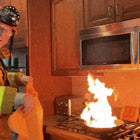 Fire
Fire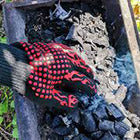 Safety
Safety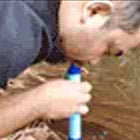 Survival
Survival Protection
Protection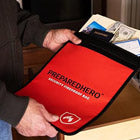 New
New
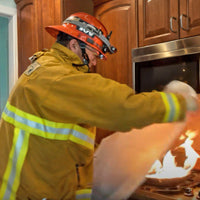 Fire
Fire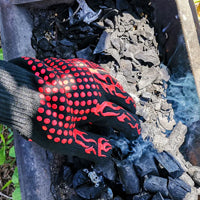 Safety
Safety Survival
Survival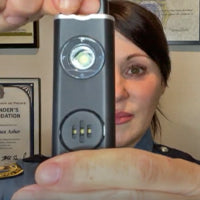 Protection
Protection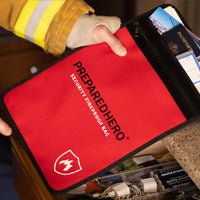 New
New
